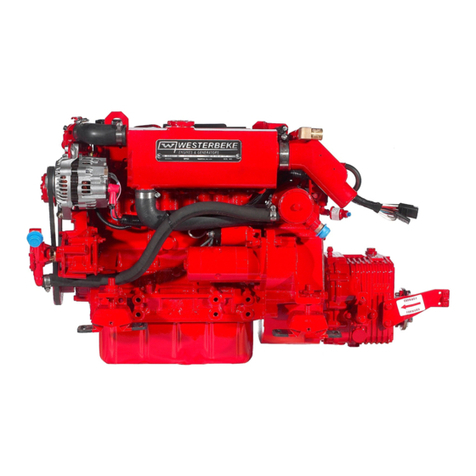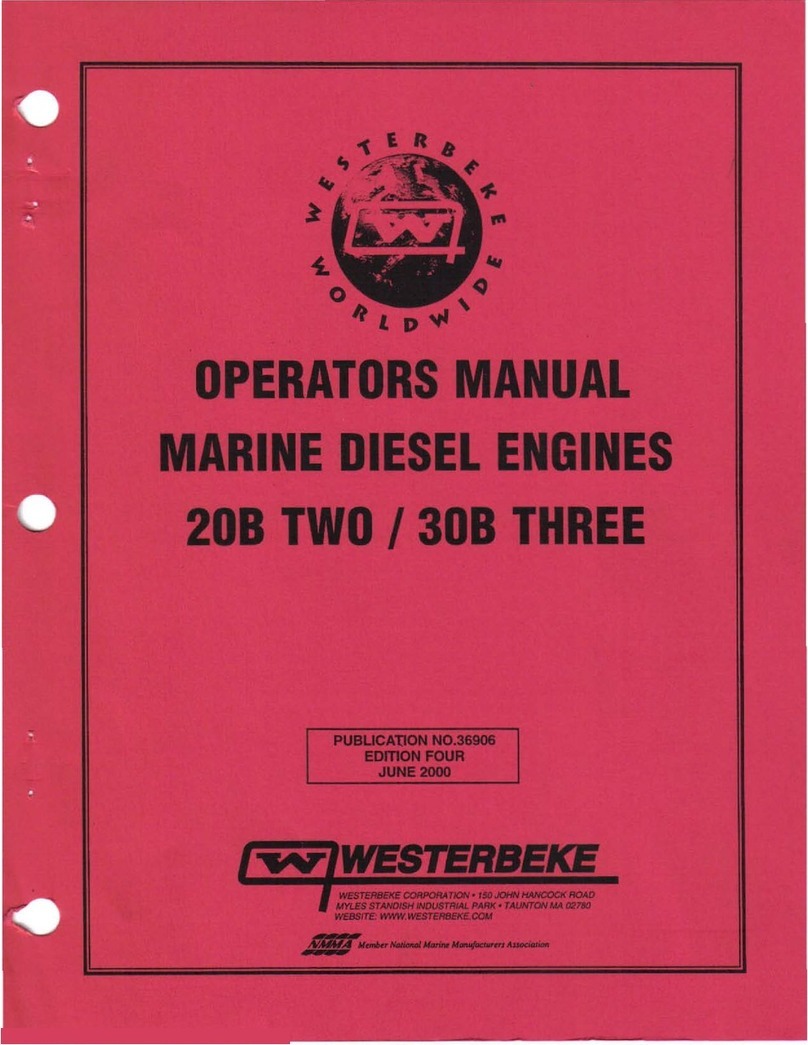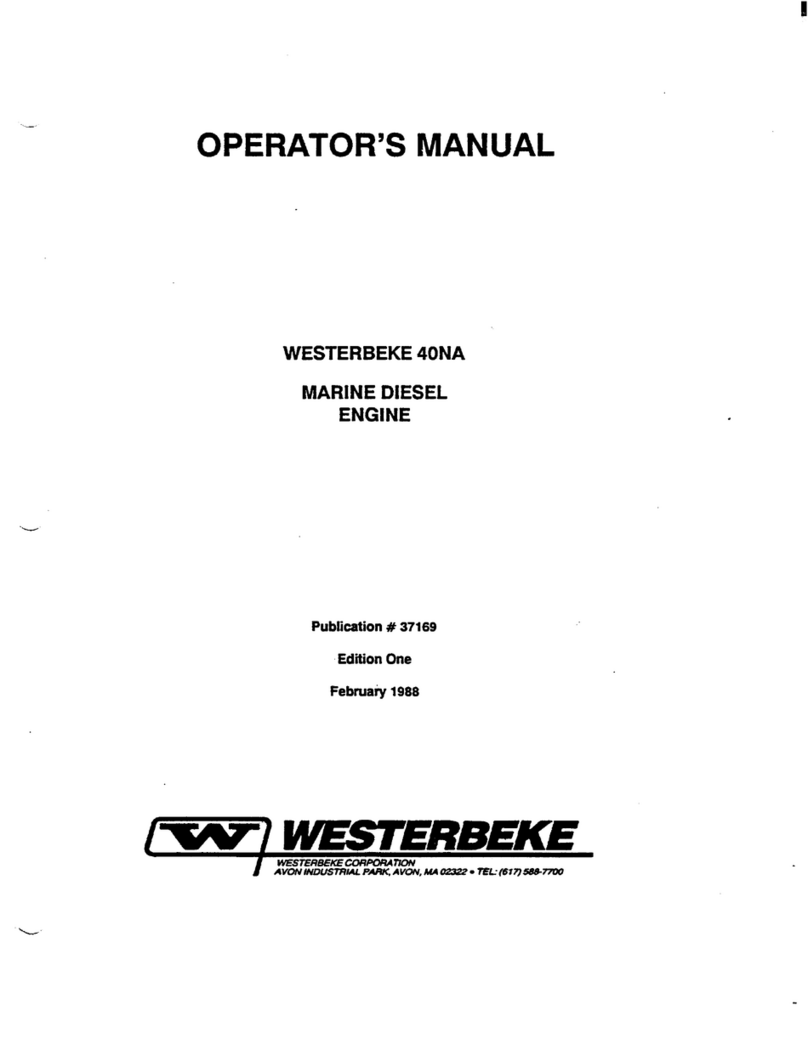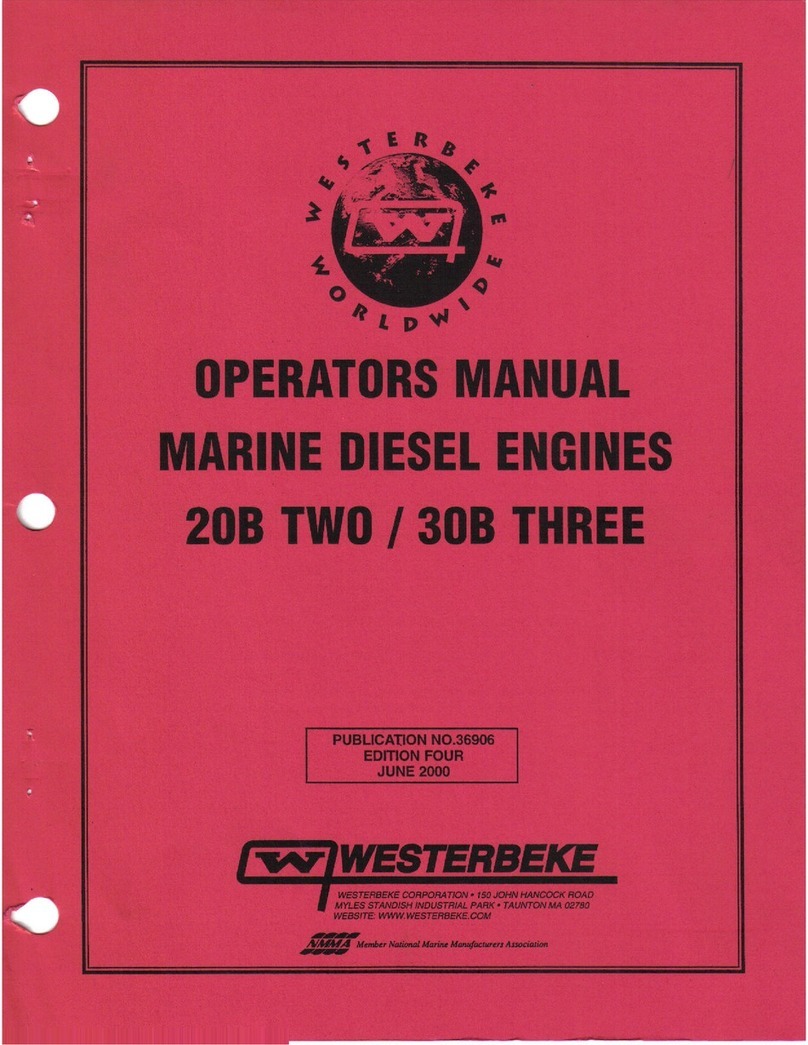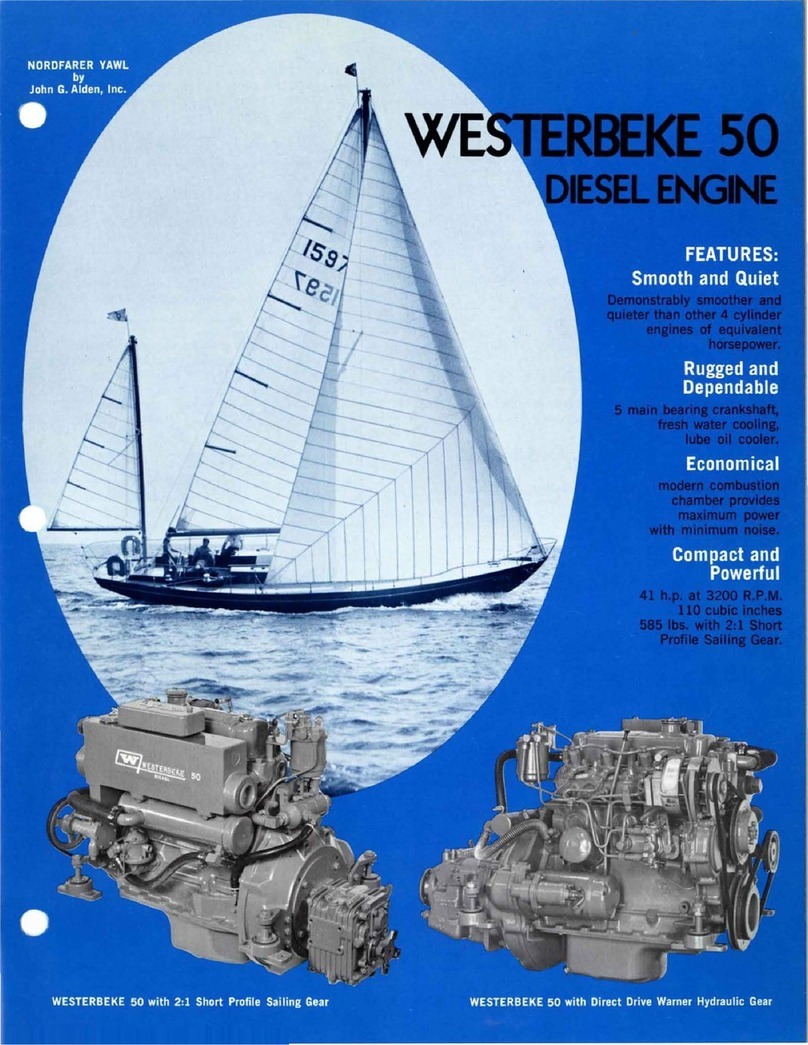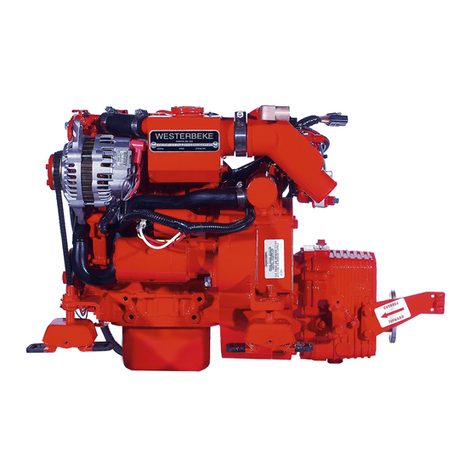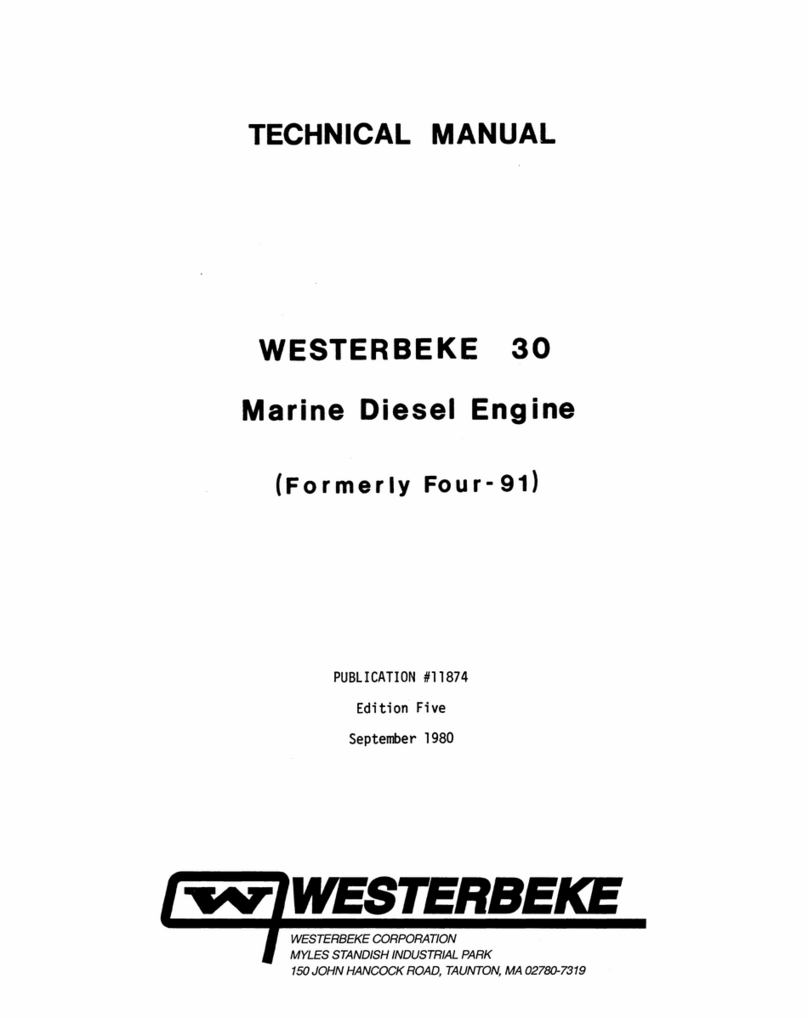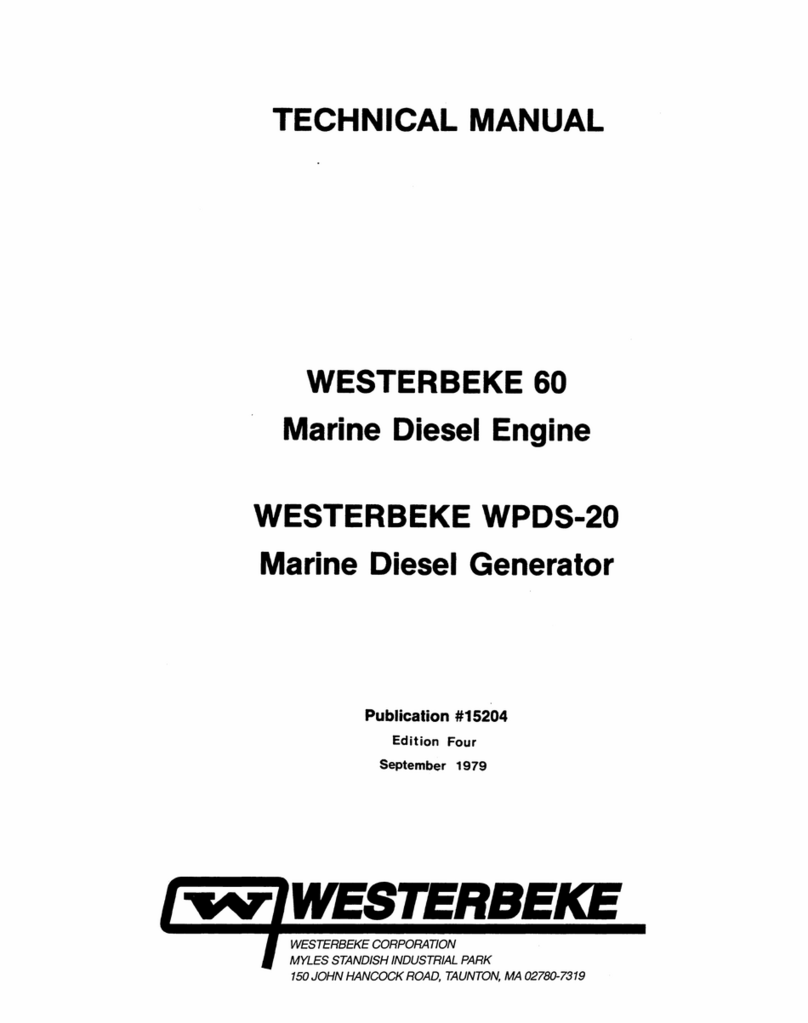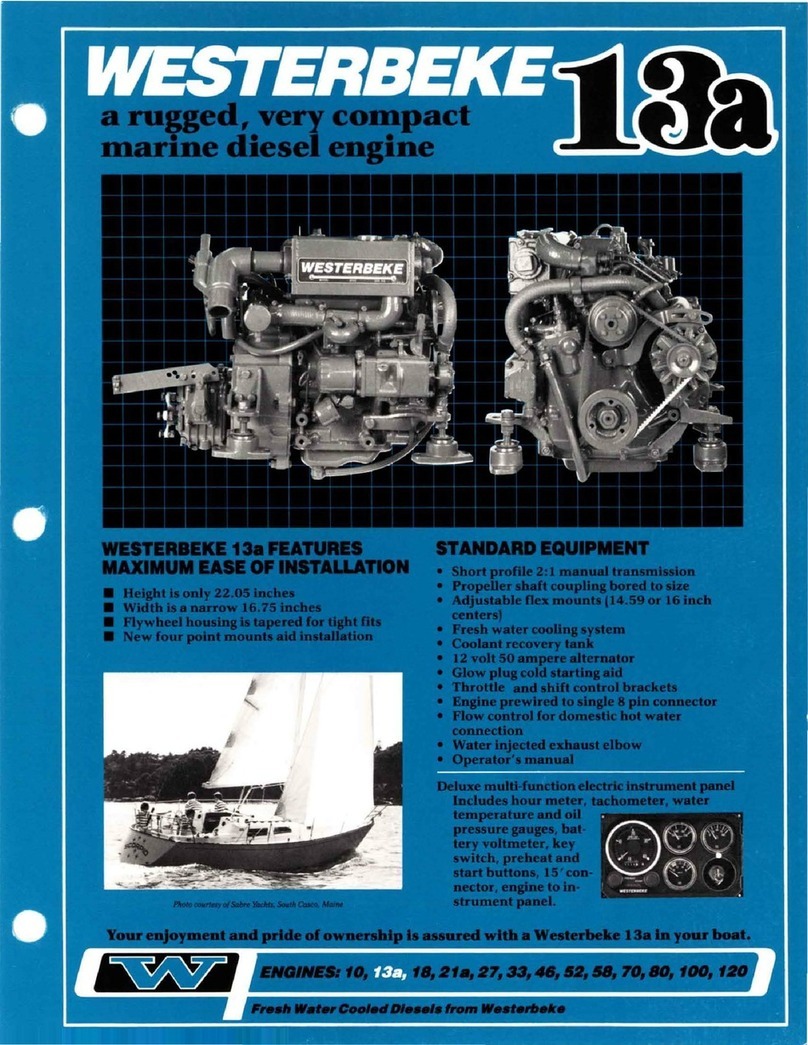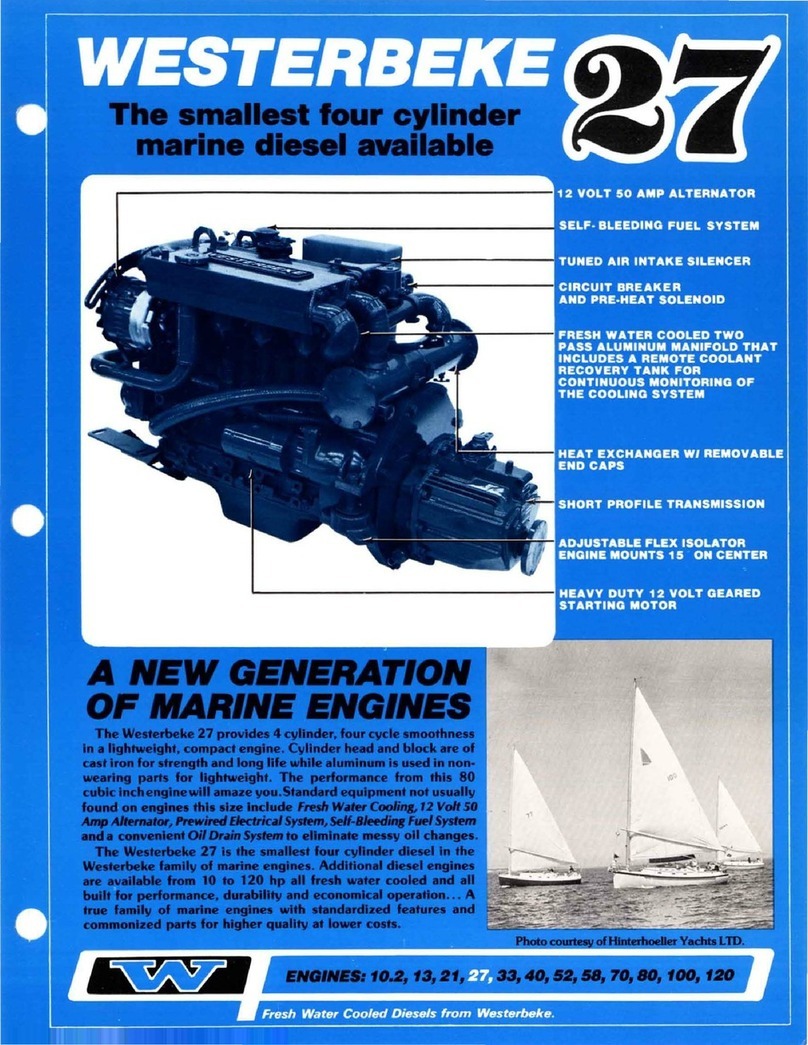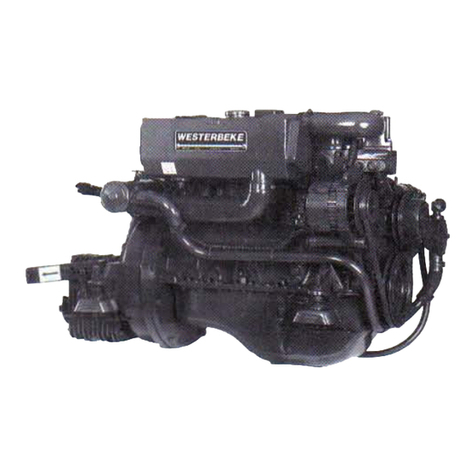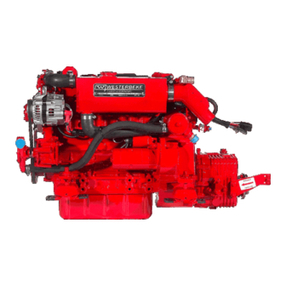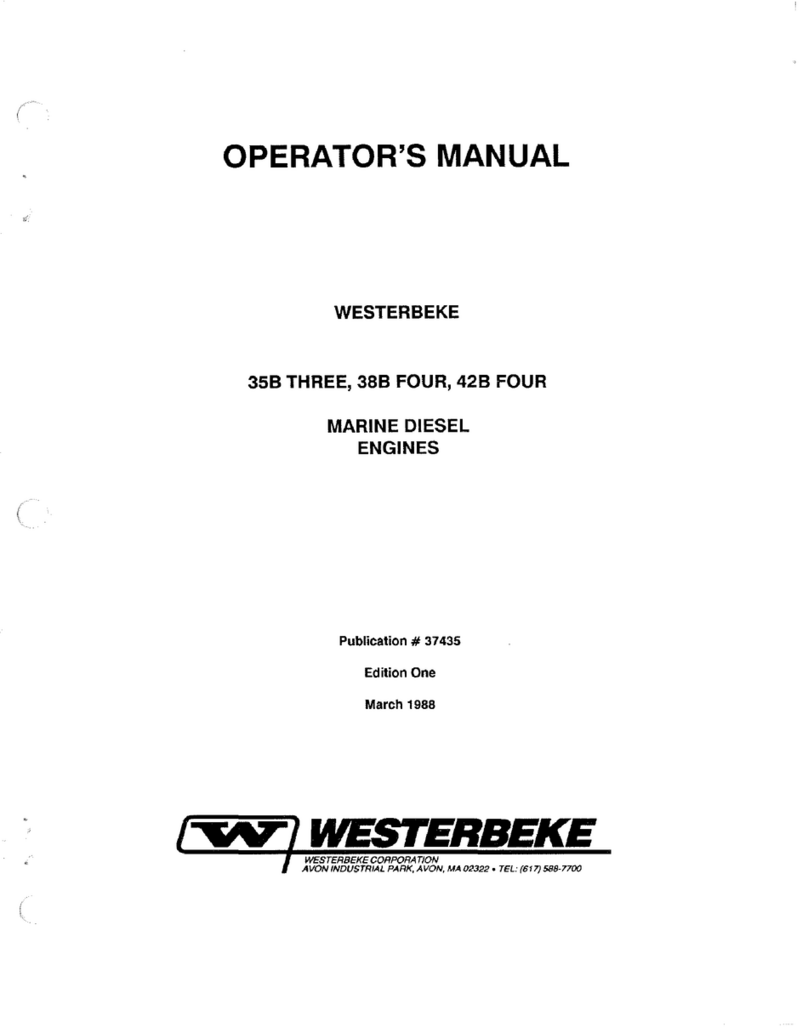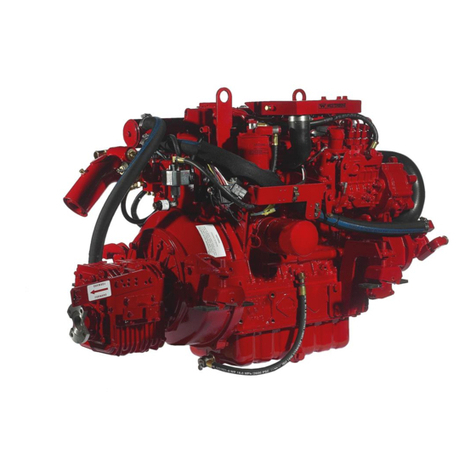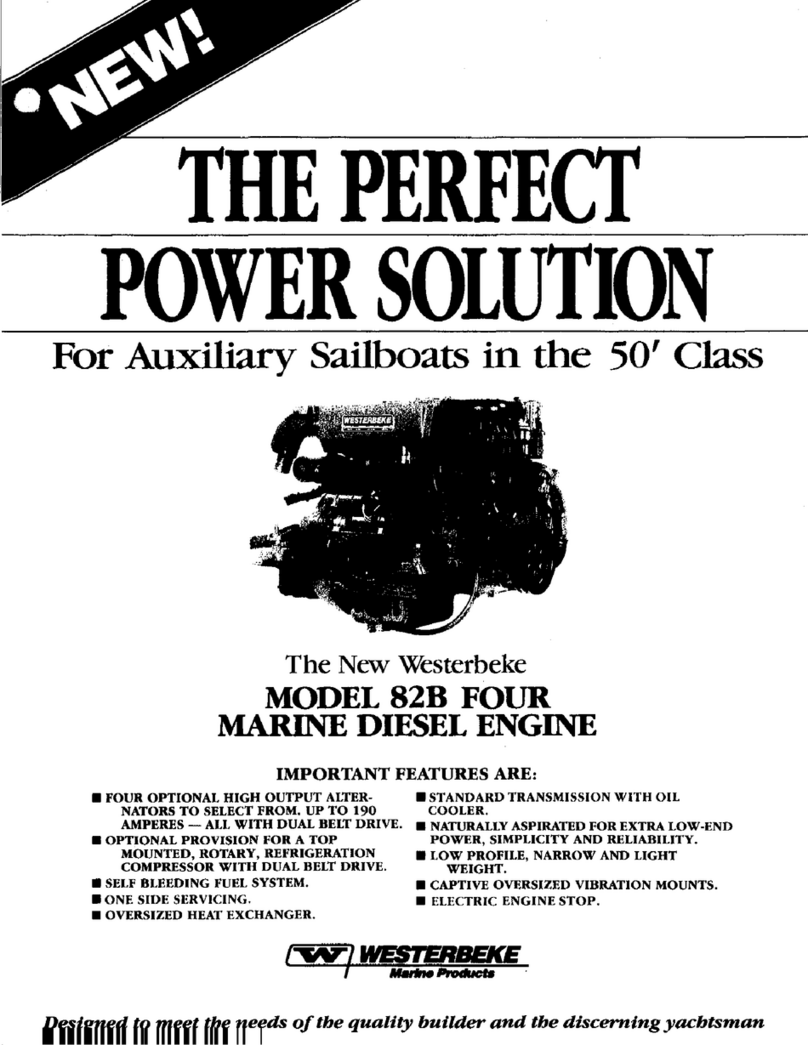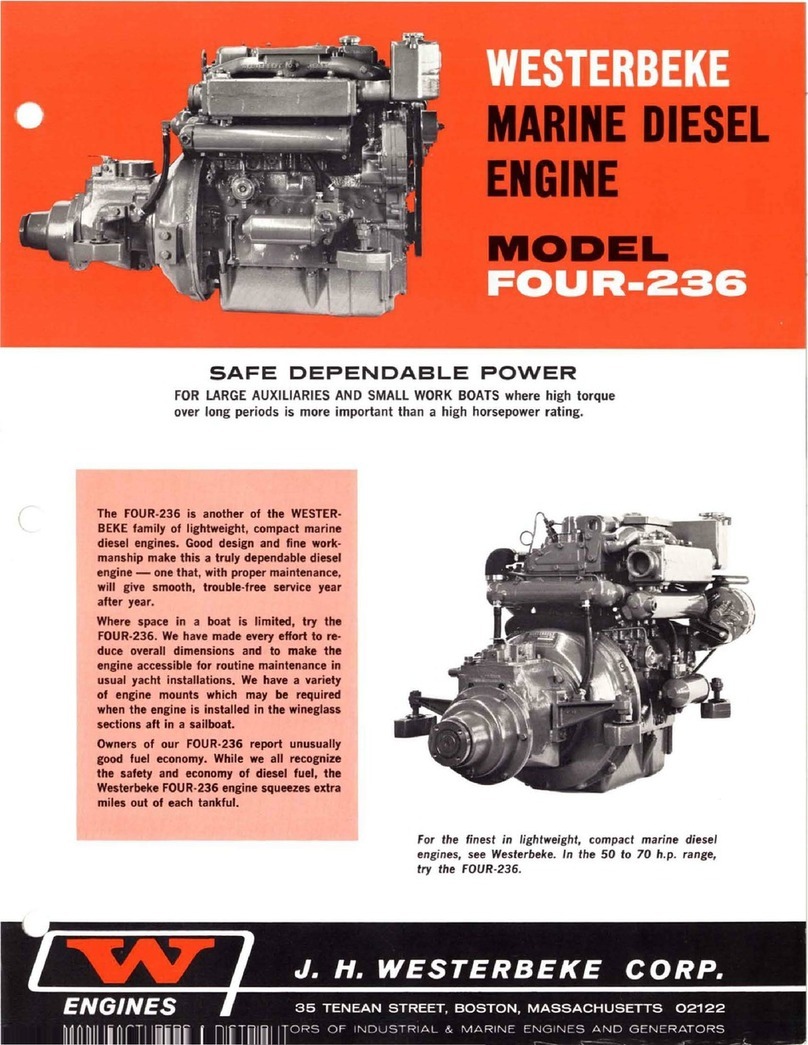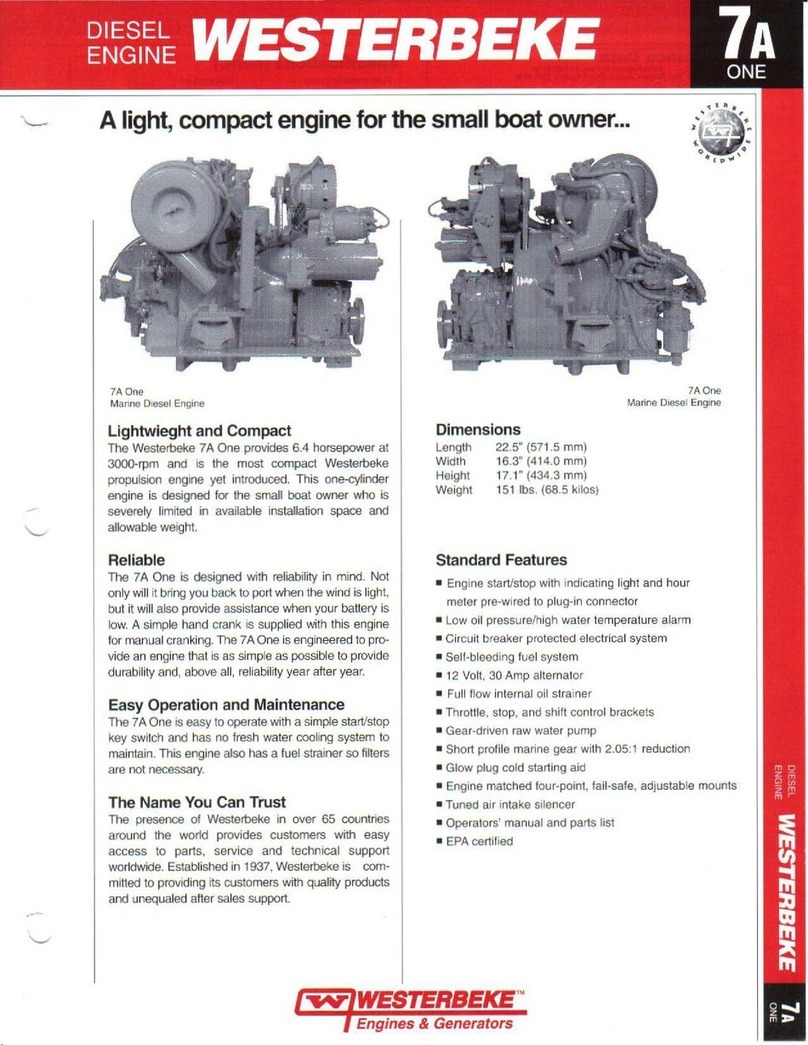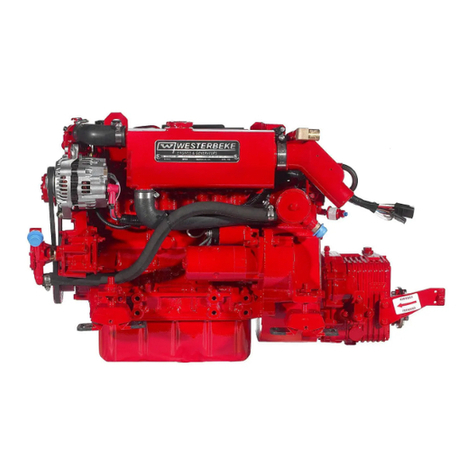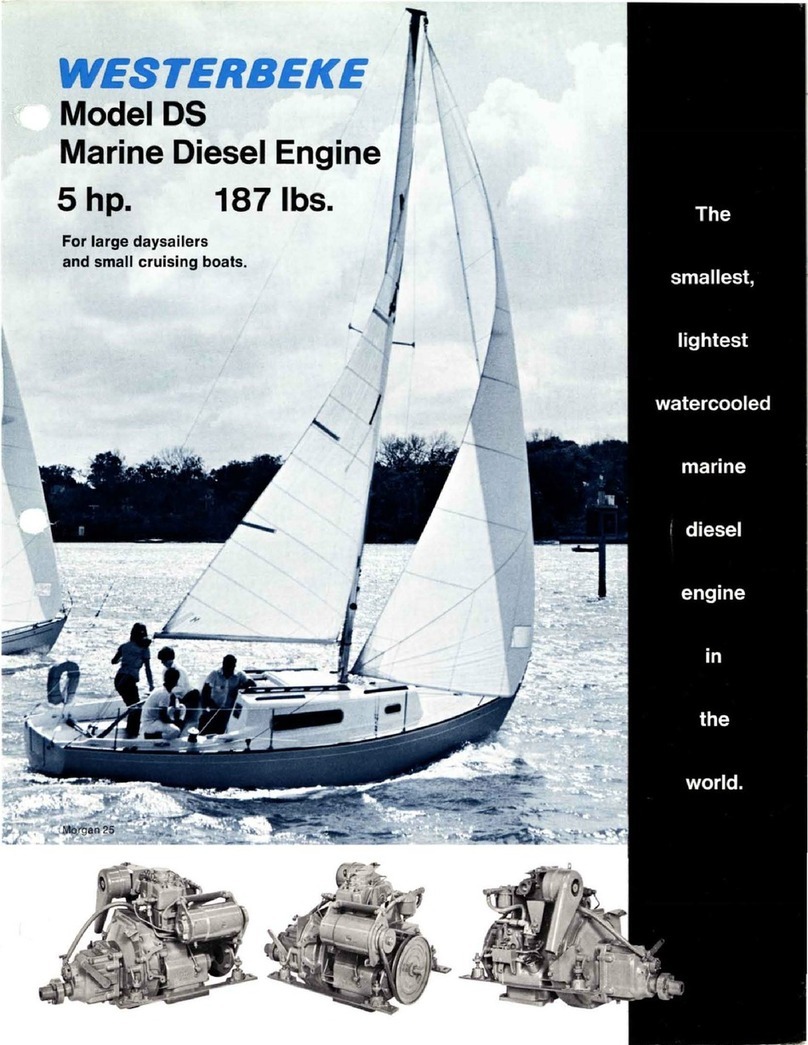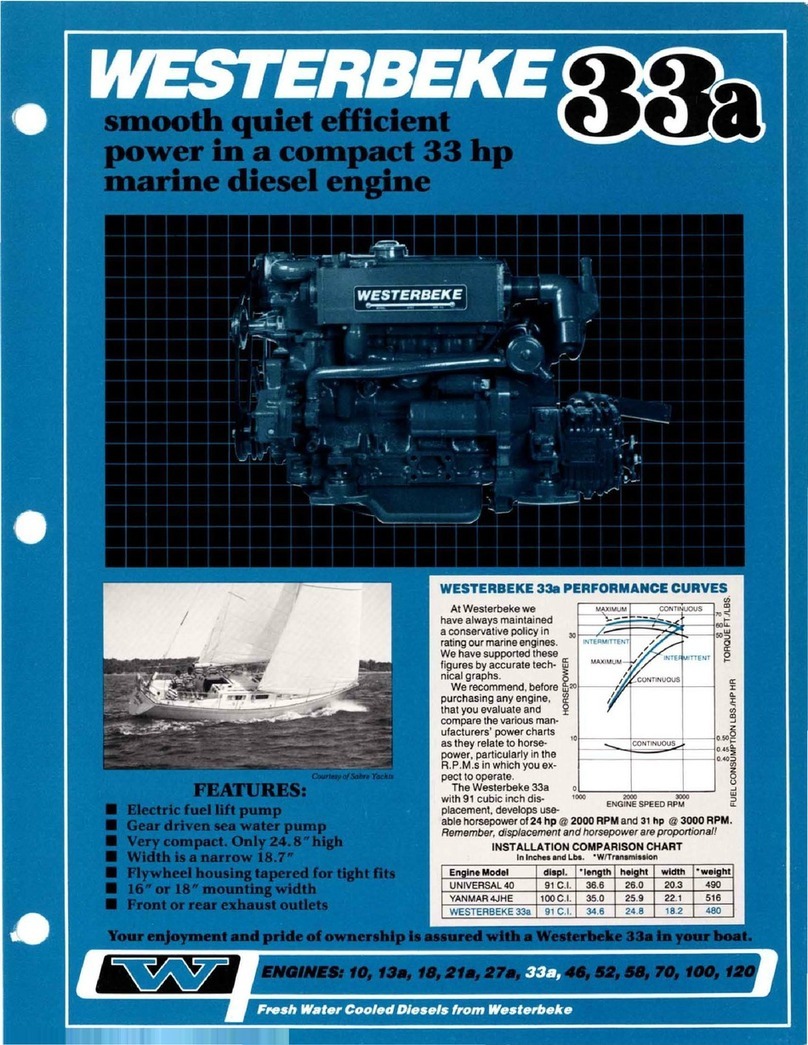
·TESTING
FOR
OVERHAUL
HOW
TO
DETERMINE
ENGINE
OVERHAUL
PERIOD
CaQse
of
Low
Compression
Generally,
the
time
at
which
an
engine should
be
overhauled
is
determined
by
various conditions such
as
lowered engine .
power
output,
decreased compression pressure,
and
increased
fuel
and
oil
consumption.
The lowered engine power output
is
not
necessarily
due
to
trouble with the engine itself, but
is
sometimes
caused by injector nozzle wear or injection pump
wear.
The
decrease
in
compression pressure is caused
by
many
factors.
It
is,
therefore,
necessary to determine a cause
or
causes
on
the
basis ofdata produced by periodic
inspection
and
maintenance.
Oil analysis on a seasonal basis
is
a
good
means
ofmonitoring engine internal
wear.
When
caused
by
worn
cylinders or pistonrings, the following.
symptoms
will
occur:
·
1 Low engine .,;ower output
2 Increased fuel consumption
·3
Iitcreased
oU
consumption
4 Hard engine
starting
5
Noisy
engine operation
These
symptoms
often appear together. Symptoms Zand 4
can
result
also
from excessive fuel injection, improper injec-
tion
timing,
and
wear of
the
injectors. They are caused also
by
defective
electrical devices such
as
the battery, alternator,
starter
and
glow
plugs. Therefore
it
is desirable
to
judge the
optimum
engine overhaul time by the
·Jowered
compressio!l
pressure
caused
by
worn
cylinders and pistons plus increased
oil
consumption.
Satisfactory combustion is obtained only
under
sufficient
compression pressure.
If
an engine lacks
compression
pressure, incomplete combustion
of
fuel
will
take
place
even
if
other
'parts
ofthe engine
are
operating
properly.
To
determine the period
of
engine overhaul, it
is
imporbplt.to
measure
the
engine compression pressure regu-
larly.
At
the
sl\!!le
time,
the engine speed at which the
mea-
.
surement
of
compression pressure is made should
be
checked
because
the
compression pressure varies with engine
rpm.
The
engine
rpm
ca:n·
be
m~ured
at
the front end ofthe
crankshaft.
NOTE:
In
case
of
severe
vibrations
and
detonation
noise,
the
cause
may
be}'u£1
ir{jector
problems,
see
FUEL
lNJECI'ORS.
Pool
fuel
quality,
contaminates
and
loss
of
positive fuel
prnssure
to
the
injection
pump
will
result
in
injector
faults.
NOTE:
Make
certain
the
engines valve clearances
are
properly
adjusted.
An
_incorrect
valve clearance
can
cause
symptons
that
might,
incorrectly,
suggest
an
engine
overhaul
(cylinder
misfire,
white
smoke,
noise,
etc).
OVERHAUL
CONDITIONS
Compression
pressure
tends
to
increase a little
in
a
new
engine
until piston rings
and
valve seats have been
broken
in.
Thereafter,
itdecreases gradually with the progress of
wear
ofthese parts.
When
decrease ofcompression pressure reaches the repair
limit,
the engine must be overhauled.
COMPRESSI_ON
TEST
When
testing
compression
the
Control
Panel
(generators),
or
the
Instrument
Panel
(propulsion
engine
)
can
be
by-passed
by
connecting
an
electrical
jumper
directly
to
the
.starter
as
shown
.
in
the
illustration
below.
A
jumper
can
easRy
be
fabricated
using
wires
and
a
pushbutton.
.
DISASSEMBLY
COMPRESSION
PRESSURE:
440
PSI/31kg-cm
(normal)
355PSI/
25kg-cm
(
limit)
NOTE:
Befo'f! disassembly
aiu:Lcleaning,
ca~lly
check
for defects
which·
cannot
be
found after
disassembly
and
cleaning.
· · ·
•
All
disassembled parts should be
carefullY._
arranged
in
order
of
reassembly. Mark orlabel
the
partS
It&
needed
to
insU.re
proper mating and
reassembly'
in
the
proper·
directions and positions.
• It:the disassembly procedure
is
complex
requiring
many
parts
to
be'
disassembled, the parts snould be
disassembled
in
a way that will allow them
to
be
efficiently
reassembled
without
any
change
in
the engine's
external
appearance
or
its
perfonnance. ·
•
Do
not remove or disassemble the parts
that
require
no
disassembly.
• Carefully inspect each part after
its
removal
for
damage,
deformation, and otherproblems.
•
Carefully
check
gaskets,
packings
and
oil
seals,
even
if
checking
is
not
specified.
Replace
with
new
ones
if
defective.
• Be careful not
to
damage the disassembled
parts.
Keep
the
parts clean.
•
Use
proper
tools.
Apply oil when
necessary.
Ta:ke
special
care·
to keep the fuel system parts
free
from
the
intrusion
ofdust
and
dirt. ·
ASSEMBLY
1.
Wash
all
p~.
exceptfor oil seals, 0-rings, rubber
sheets,
etc.,
with cleaning solvent and dry
them
with
pressure
air.
Z.
Always
use
tools that
are
in good condition ahd be
sure·
you
understand
how
to
use them
before
perfonning
any
job.
3.
Use
only good quality lubricants. Be
sure
to
apply
a
coat
ofoil, grease or sealant to parts
as
specified
..
4.
Be sure
to
use a torque wrench
to
tighten
parts
for
which
torques are specified.
·Engines&Generators
3
